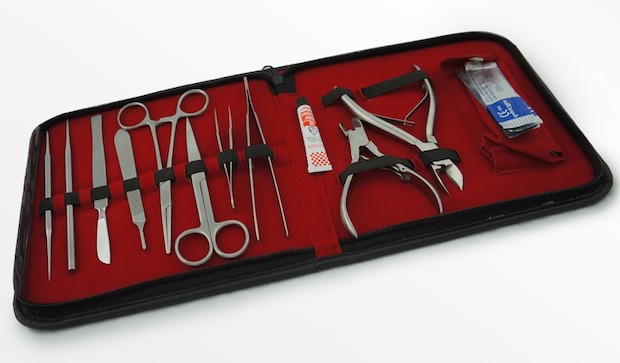Extreme Corals News and Updates
How to Frag Corals growing in your Reef Tank
If you're new to the hobby or a seasoned veteran, you have heard of "Coral Frags" but do you know the process?
If you have interest in fragging corals. Read the following information in a step by step guide of how to make your very own coral frags
by scott Shiles • March 01, 2023
Zoanthids Coral Care, SPS Coral Care, Soft Corals Care, LPS Coral Care, All Corals
Fragging, or fragmenting, corals is a popular practice among reef tank hobbyists. Fragging involves cutting a piece of a coral and growing it separately, either to create a new coral or to share with other hobbyists. It's an excellent way to propagate coral colonies and help prevent the depletion of wild coral reefs. In this blog post, we will explain how to frag corals in your reef tank, including the equipment you'll need and the steps to follow.
Equipment You'll Need
- Safety gloves
- Safety glasses
- Scalpel or bone cutters
- Fragging tray
- Coral epoxy
- Soft-bristled brush
- Rubbing alcohol
- Towel
Step-by-Step Guide to Fragging Corals
Step 1: Choose the Coral to be Fragged
Select a healthy coral colony that has grown large enough to allow for a small cutting. It's important to choose a coral that's in good health and not stressed. Also, ensure that the coral you're planning to frag has a solid skeleton, as this will provide a stable base for the new coral to grow.
Step 2: Prepare Your Workspace
Before you begin fragging, make sure that your workspace is clean and organized. Set up your fragging tray, and put on your safety gloves and glasses to protect your hands and eyes. You should also have your tools, coral epoxy, and rubbing alcohol nearby.
Step 3: Clean the Coral
Using a soft-bristled brush, gently clean the coral's surface with rubbing alcohol to remove any debris or algae that may be on it. This will help to prevent the introduction of any harmful bacteria or pathogens during the fragging process.
Step 4: Cut the Coral
Using a sharp scalpel or bone cutters, make a clean cut on the coral's surface. Make sure to cut at a 45-degree angle, and take care not to damage the coral's skeleton. Place the cut coral into the fragging tray.
Step 5: Apply Coral Epoxy
Apply a small amount of coral epoxy to the base of the cut coral. This will help to anchor it to its new location and promote healing. Be sure to work quickly, as the epoxy will start to harden within a few minutes.
Step 6: Allow the Coral to Heal
Allow the cut coral to heal in the fragging tray for several hours before moving it to its new location. During this time, keep the coral in a well-lit and well-circulated area of the tank.
Step 7: Monitor the New Coral
Keep a close eye on the new coral to ensure that it's adapting well to its new environment. Check for any signs of stress, such as discoloration or tissue recession. If necessary, make adjustments to the water flow, lighting, or water chemistry to ensure the coral's continued health and growth.
Fragging corals in your reef tank is an excellent way to propagate coral colonies and help to prevent the depletion of wild coral reefs. With the proper tools, techniques, and precautions, fragging can be a safe and straightforward process. Remember to always wear safety gloves and glasses, work quickly with the coral epoxy, and monitor the new coral closely to ensure its health and growth.

